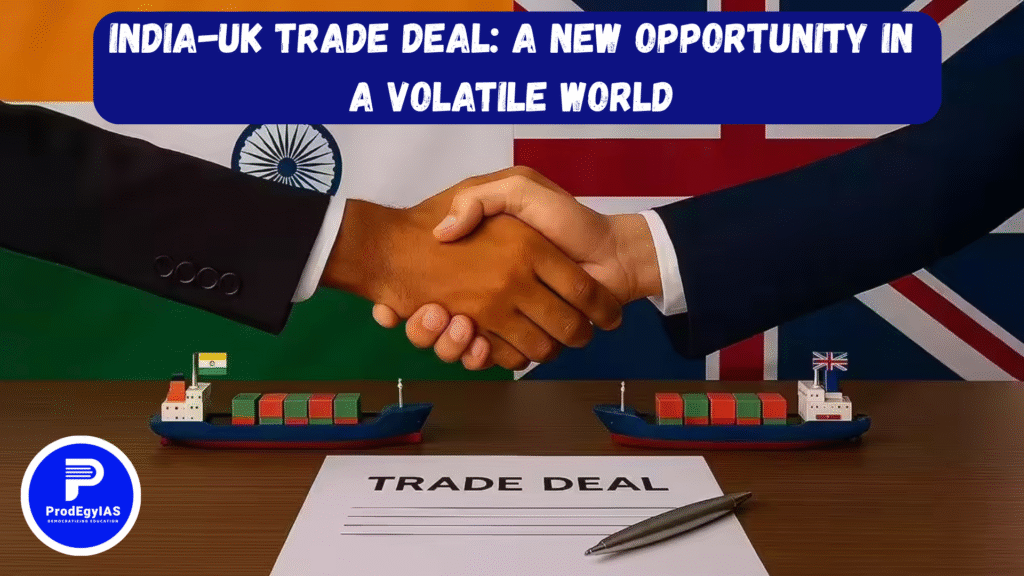
After more than three years of discussions, the India-UK Comprehensive Economic and Trade Agreement (CETA/FTA) was finally signed on July 24, 2025. With many charges phased in over time, the agreement seeks to remove tariffs on 90% of UK imports and most Indian exports. So its a new opportunity in a volatile world.
Why it’s important now
India’s labour-intensive exports are under pressure from U.S. tariffs, so the UK arrangement provides a buffer for diversification. By creating alternative routes, it protects Indian exporters, particularly those in the textile industry, as one explainer points out. The agreement is viewed as a strategic shift since it allows for more access to the UK and European markets, which can reduce trading risk with the United States.
Key Features & commitments
- Tariff liberalisation: India will eliminate tariffs on 90% of UK imports, while the UK will do the same for about 64% of them, which include industrial inputs, electronics, and machinery.
- Phased removal: Over a ten-year period, certain commodities (such as cosmetics and auto parts) will be liberalised gradually.
- Implementation roadmap: The Joint Economic & Trade Committee (JETCO) was repositioned for monitoring when the two nations’ trade ministers convened in October 2025 to sketch out the operational course.
Aiming to quadruple bilateral commerce (goods + services) from about USD 56.9 billion in 2024–2025 to USD 120 billion by 2030, the agreement has an ambitious growth target.
Blind spots and challenges
- Standards and rules of origin: In order to comply with UK certification requirements, many MSME exporters need to update their compliance processes.
- Limited sectoral gains in certain segments: In comparison to losses in more vulnerable U.S. markets, labour-intensive industries like gems and jewellery may see a slight gain.
- Ratification lag: Gains could be halted if the pact is not approved by the Indian Parliament and the UK Parliament.
The India-UK trade agreement, in summary, is a measured move towards rebuilding India’s trade architecture in an increasingly fragmented global economic order, but it is not a panacea.
UPSC General Studies Paper Preparation
| Topic | |
| UPSC Syllabus | UPSC Free Notes |
| UPSC Optional Subjects | Khushhali Solanki (AIR 61, UPSC CSE 2023) |
Public Administration Optional Exam Preparation
Topic | |
About the Author: Jyoti Verma



